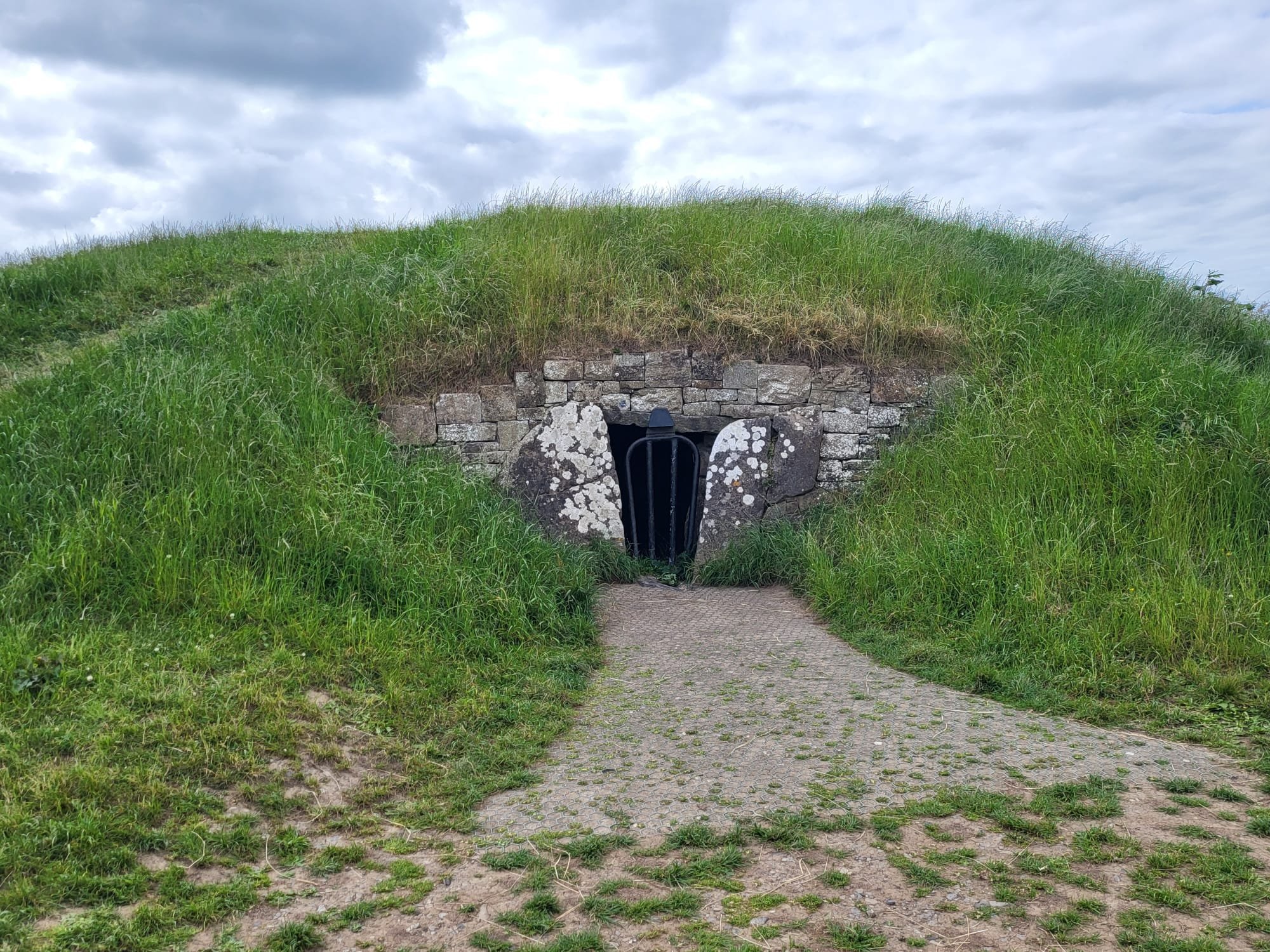In Castleboy of Royal Meath . . .
You will find the hill of Tara, the coronation site of Ireland’s ancient high kings. It is only a short drive from Dubin, roughly 40 km from the city’s centre. Standing proudly near its crest is the Lia Fáil, the stone of destiny or speaking stone. This one-metre-tall sandstone orthostat holds a special place in Ireland’s history and lore. This stone is considered one of the four magical treasures of the Tuatha Dé Danann, a mythical tribe of semi-devine people. Legend has it that the Tuatha Dé Danann were driven underground by the Milesians, another mythical race. Some say the entrance to their world can be accessed through the burial mounds that dot the Irish landscape.
According to historians, going back thousands of years, the Lia Fail was thought to have lain flat. Back then, those wishing to claim the crown would take turns to test their worth by standing on the stone which was said to cry out when the rightful king rested his feet on it.
Other accounts have the would-be kings leaping over it, but the result was always the same, the stone calls out when the true king passes over it.
Some speculate that the stone was lent to the Scots and brought to Dalriada, the ancient Scottish kingdom for the same purpose. However, such speculation may be a mix-up with the stone of scone, Scotland’s coronation stone.
The only thing we can know for sure is that up to the time of King Murtagh MacEirc, the Lia Fáil always cried out with joy when the rightful king was near.
Close by, is the mound of the hostages, an ancient burial cairn built in the style of the majestic Newgrange passage tomb. The mound is estimated to have been constructed around three thousand years ago. Inside its passage chamber, hundreds of cremated bodies were laid to rest, with flat stones repeatedly placed over centuries of ashes, creating generational layers during its usage. The remains of an adolescent’s body and its belongings, from the bronze age, the later part of the mound’s active era, were also excavated by archaeologists.
The tip of the mound is the highest point of the hill, and the passage grave is believed to have been given its name during medieval times because this is where the symbolic exchange of hostages took place.
The mound’s entrance is aligned with the rising sun, so it is illuminated on the mornings of the Gaelic festivals Imbolc, the start of spring, and Samhain, the beginning of winter. Inside, siltstones are covered with spirals and other decorations, sadly, due to preservation and safety concerns the passage is no longer accessible. Despite this, not needing to dip one’s hand in their pocket makes the Hill of Tara a worthy visit indeed.

